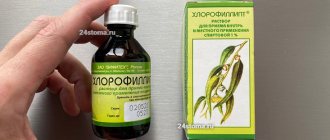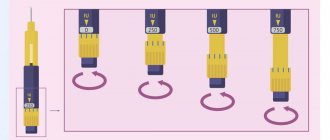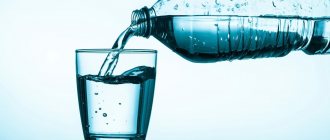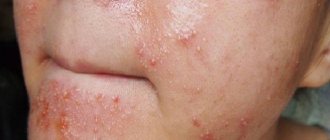Iron deficiency is one of the most common types of abnormalities in the body among adults, according to WHO. Most often it develops for a fairly obvious reason: an unbalanced diet.
But other options are also possible. For example, a decrease in the intestines' ability to absorb iron with age or after surgery on the gastrointestinal tract. Iron deficiency anemia is also regularly diagnosed in pregnant women.
Symptoms of iron deficiency
Iron deficiency in the body manifests itself in many different symptoms. They are all divided into two main syndromes: anemic and sideropenic.
With anemic syndrome, the hemoglobin level drops and the following symptoms occur:
- Weakness and fatigue
- Dizziness
- Noise in ears
- Severe sensitivity to cold
- Shortness of breath and shortness of breath
- Cardiopalmus
- Low pressure
With sideropenic syndrome, many tissues of the body lack iron. A person may be concerned about:
- Dry and flaky skin
- Cracks in the corners of the mouth
- Tongue pain or burning
- Dry mouth
- Brittle nails and hair
- Changes in sense of smell and taste
To determine an accurate diagnosis, it is necessary to do a clinical blood test
Study design
The single-center, open-label, randomized study included patients observed at Huashan Hospital, Fudan University.
Patients aged 18 years or older with iron deficiency anemia were randomized 1:1 to receive iron (100 mg) plus vitamin C (200 mg) or iron alone (100 mg) three times daily for 3 months.
As primary endpoint
We looked at changes in hemoglobin levels 2 weeks after the start of therapy. Secondary endpoints included change in reticulocyte count after 2 weeks of therapy, increase in hemoglobin level after 4 weeks of therapy, and increase in ferritin level after 8 weeks of therapy.
Types of iron-containing drugs
There are several types of medications available to correct iron deficiency in the body or treat anemia.
Taking them without consulting a doctor is highly not recommended. Only based on the examination, the doctor will be able to choose a medicine for you based on the principle of action and dosage.
Iron tablets
On the pharmaceutical market, the most widely used drugs are those containing ferrous iron: ferrous gluconate or ferrous sulfate. Their effectiveness is almost the same. Iron sulfate contains a little more, but this difference is not noticeable due to the different dosage.
Such medicines act quickly. Ferrous iron is well absorbed and raises hemoglobin levels in 2-4 weeks. It is always necessary to take iron salts under the supervision of a doctor to avoid side effects or overdose.
Vitamins containing iron
More often used as a prophylaxis for iron deficiency or as part of a complex treatment of anemia at the initial stage. Vitamin complexes use ferric iron, which is absorbed by the body a little less well. It is combined with other vitamins and minerals to improve performance.
One of the significant advantages is that vitamins with iron have virtually no side effects.
dietary supplements
In general, dietary supplements can contain vitamins in addition to iron. So they have no fundamental differences with vitamin complexes in indications for use and action.
The paradox of treating anemia: when less becomes more
Iron deficiency, affecting nearly half the world's population, is the most common cause of anemia and remains a major health problem worldwide. Thus, the annual report of WHO (1998) indicates that 3.6 billion people on earth have iron deficiency, and 1.8 billion people suffer from iron deficiency anemia (IDA). In 1998, there were about 480 thousand people with anemia in Russia; of these, approximately 432 thousand are IDA (Department of Medical Statistics and Informatics of the Information and Analytical Center of the Ministry of Health of the Russian Federation, 2001).
Latent (hidden) is widespread among the population
iron deficiency, when hemoglobin levels are still normal, but transport and organ reserves of iron are already depleted. The patient's iron stores are judged by the level of ferritin in the blood serum. If its level decreases below 50 mcg/l in the blood serum, then it is necessary to exclude prelatent or latent iron deficiency. If ferritin levels drop below 20 μg/L, mild IDA should be excluded (10). This forces us to pay more attention to the problem of hidden iron deficiency, which is understood as sideropenia - a decrease in iron content in tissues with normal hemoglobin levels and the number of red blood cells. It affects twice as many people as iron deficiency anemia. Thus, if in developed countries of Europe and in Russia iron deficiency anemia is detected in 10% of women of childbearing age, then hidden iron deficiency is observed in approximately 30% of women. The main cause of hyposiderosis in women, in addition to pregnancy, is pathological menstruation and uterine bleeding. Polymenorrhea can cause a decrease in iron reserves in the body and the development of hidden iron deficiency, and then iron deficiency anemia. Uterine bleeding increases the volume of blood loss in women to the greatest extent and contributes to the occurrence of iron deficiency conditions.
The second most common factor causing the development of posthemorrhagic iron deficiency anemia is blood loss from the digestive canal, which is often hidden and difficult to diagnose. In men, this is the most common cause of sideropenia. Such blood loss can be caused by diseases of the digestive system and diseases of other organs. The cause of hidden or difficult to diagnose blood loss is a hiatal hernia, varicose veins of the esophagus and rectum with portal hypertension, hemorrhoids, diverticula of the esophagus, stomach, intestines, Meckel's duct, tumors.
After identifying iron deficiency or IDA in a patient, the doctor must prescribe adequate therapy. Currently, the doctor has at his disposal a large arsenal of iron drugs, characterized by different amounts of iron contained in them, different compositions and the presence of additional components that affect the pharmacokinetics of the drug.
The purpose of this review was to compare different groups of drugs for the treatment of IDA in terms of effectiveness and tolerability, so that the doctor could analyze the data presented and make a choice of drug for the treatment of IDA in his patients. To achieve this goal, an analysis of the data presented in the medical literature was carried out.
Medicines for the treatment of IDA, which are used in Russia, contain iron in two forms: ionized
Fe 2+
as part of any inorganic or organic salt (sulfate, chloride, fumarate, lactate, etc.), and iron as part of complexes containing
oxide Fe 3+
(iron hydroxide polymaltosate or sucrose complex - Fe3+-HPA).
Toblli JE and co-authors in 2007 analyzed works comparing the effectiveness of groups of drugs containing Fe2+ and Fe3+ salts of HPA in the treatment of anemia. MedLine identified 14 comparative studies, of which 6 studies noted better effectiveness of Fe2+ salts, 7 studies noted equal effectiveness in increasing hemoglobin, 1 study noted better effectiveness of Fe3+ -HPA compounds (7).
Thus, most researchers note that preparations of Fe2+ salts either faster or equally increased hemoglobin levels and replenished iron reserves in the patients’ bodies. At the same time, some researchers noted that the cost of therapy was more affordable when using preparations of Fe2+ salts.
Also, the group of drugs containing ionized iron Fe2+ can be divided into two subgroups according to the content of elemental iron per dosage form unit (tablet, capsule): one subgroup with a high content of elemental iron - 80-100 mg and the second subgroup - with a lower content of elemental iron - 34 .5-50 mg.
Of interest are the data published by Jacobs et al. in 1984 on the study of the bioavailability of iron from preparations containing different amounts of elemental iron (9). The bioavailability of Fe2+ salt preparations containing 50 mg of elemental iron was 33%, i.e. the body absorbed approximately 15 mg of iron. When the elemental iron content increased to 100 mg, the bioavailability of iron salts decreased to 11%, i.e. the body absorbed 11 mg of iron. A similar pattern was noted for Fe3+-HPA preparations; the higher the elemental iron content, the lower the bioavailability. When the Fe3+-HPA preparation contained 50 mg of elemental iron, the body also absorbed more iron than when receiving 100 mg at a time. The paradox of the situation is that with a smaller dose of the drug, more iron enters the patient’s body.
This may be related to the recommendations for general practitioners for the treatment of IDA in the USA: “For adult patients who are not pregnant, the Center for Disease Control and Prevention (CDC) recommends taking 50-60 mg of elemental iron 2 times a day for 3 months " (4).
More than 95% of all prescribed iron supplements in the United States for the treatment of IDA are preparations of Fe2+ salts. Most often these are ferrous sulfate preparations in small doses (up to 30-50 mg), which is due to their better bioavailability and low cost.
Also, for the treatment of IDA, the tolerability of the iron supplement or the frequency of side effects is very important. Up to 21% of patients stop taking iron supplements due to poor tolerability (5). This is often due to the fact that iron salts are prescribed in a dosage of 100 mg.
Many researchers note that up to 10-20 mg of iron per day can be adsorbed through the gastrointestinal tract. The bone marrow requirement is 20-30 mg per day and most of the iron comes from macrophages of the reticuloendothelial system, from destroyed red blood cells (8). The remainder of the unabsorbed iron from a dosage of 100 mg will remain in the intestinal lumen until excreted from the body, affecting the gastrointestinal mucosa and causing side effects such as nausea, epigastric pain, constipation or diarrhea (5).
If we compare the tolerability of iron preparations at high doses of elemental iron (100 mg), then Fe3+-HPA preparations are better tolerated.
To improve the tolerability of Fe2+ salt preparations, sustained-release forms are often used.
They also try to use the form of enteric capsules to eliminate the effect of iron salts on the gastric mucosa. The absorption of iron is further prolonged by the special technology of microdialysis granules containing the drug.
The use of a dosage form with a slow release of
Fe 2+ reduces the incidence of side effects by 2 times (1, 2, 6).
It is this technology for releasing iron from microdialysis granules that is used in the production of the drug Fenyuls (Ranbaxy Laboratories Limited).
According to Professor O.D. Shaposhnik, in the treatment of mild IDA caused by chronic blood loss due to gastrointestinal diseases, the drug Fenyuls at a dose of 45 mg of elemental iron per day was not inferior in effectiveness to the drug ferrous sulfate 100 mg, prescribed in the comparison group.
With a more pronounced degree of anemia, patients were prescribed the drug Fenyuls twice a day, 45 mg, and the drug was well tolerated.
The greatest increase in hemoglobin was observed in patients with moderate anemia, which averaged 28.6 g/l over 4 weeks of therapy (1).
Similar results were obtained by V.I. Orlov et al (2002) in the treatment of women with chronic posthemorrhagic IDA of moderate severity. Patients received 2 capsules of the drug Fenyuls (90 mg of elemental iron) per day. The drug was also well tolerated. The duration of treatment depended on the initial hemoglobin level and corresponded to 1-2 months (12).
conclusions
Fe2+ sulfate and Fe3+-HPA have comparable clinical efficacy
, but Fe2+ sulfate allows you to increase hemoglobin faster.
Low iron absorption is observed at doses above 100 mg: about 90% of the dose is not adsorbed or absorbed (3).
The advantage of Fe3+-GPA is not in the effectiveness of treating anemia, but in tolerability
drugs manifests itself most noticeably with high doses of iron (from 100 mg).
The use of absorption prolongation systems allows FeSO4 preparations at a dose of 50 mg to be as tolerable as Fe3+-HPA.
Five signs of a problem
How to determine if you are lacking iron.
1. Assess your condition. The most important sign of iron deficiency is muscle weakness, which is often attributed to chronic fatigue.
2. Pay attention to your skin, hair and nails. Increased fragility and layering of nails (sometimes they have a spoon-shaped concavity), hair loss, a pale yellowish tint to the skin, as well as a burning sensation of the tongue (as if it had been scalded) and a perversion of taste should also alert you.
3. Check your calendar. Has your menstrual cycle gone downhill or has your discharge become more abundant? Normally, during menstruation we lose an average of 30-50 ml of blood or 15-20 mg of iron. With heavy menstruation, losses increase.
4. Review your diet. Have you gone overboard by eliminating high-calorie meat products from your diet? Alas, a plant-based diet does not contribute to the accumulation of iron in the body. Its consumption also increases during physical activity, for example when playing sports.
5. Count your colds. And at the same time, remember what you used to treat them. Uncontrolled medication use often reduces iron stores.
Almost all antibiotics and sulfa drugs can lead to so-called drug anemia. And frequent infections indicate reduced immunity - it may very well be that the same iron deficiency is to blame.
Did you answer “yes” to most questions? Then you will have to develop an action plan to eliminate iron deficiency.
results
- The study included 440 patients. 97% of patients were women. The average age of the patients was 38 years.
- According to the analysis, the mean change in hemoglobin level after 2 weeks of therapy was 2 g/dL in the oral iron + vitamin C group and 1.84 g/dL during iron monotherapy (difference between groups 0.16 g/dL; 95% CI , −0.03-0.35 g/dl).
- The mean change in serum ferritin levels after 8 weeks of therapy was 35.75 ng/ml during iron + vitamin C therapy and 34.48 ng/ml during iron alone (difference between groups, 1.27 ng/ml; 95% CI, −0.70–3.24 ng/mL; P = 0.21).
- There were no significant differences between the groups in the frequency of side effects (20.9% in the combination therapy group and 20.5% in the iron monotherapy group).
- Not a single patient refused therapy due to the development of adverse events.
What is dangerous about excess iron in the body?
Getting too much iron from food is difficult. If there is too much of a microelement, the body uses its control system.
Iron levels in the blood may be elevated in people with hemochromatosis. This occurs due to the pathological activity of a certain gene, which enhances its absorption in the body.
Blood transfusions and severe metabolic disorders can provoke an excess of iron. When a microelement is supplied in large doses, it accumulates in the liver and other tissues. Therefore, you can take iron supplements only after consultation with a specialist and in strictly recommended doses.
TOP - iron source products
Everyone knows that the source of iron is red meat. However, there are other products that contain this element. It is found in food in heme and non-heme forms.
Heme Iron Products
Heme iron can be obtained from animal products that contain hemoglobin, such as fish, meat and poultry. In this form, it is well absorbed by the body (up to 40% of the total volume).
Foods to include in your diet to obtain heme iron:
- Pork and beef.
- Chicken.
- Veal.
- Fish: perch, salmon, haddock, halibut, tuna, grouper.
- Oysters and mussels.
An excellent source of heme iron is the liver.
Non-heme iron foods
Non-heme iron is found in plant foods. It can be obtained from vegetables, grains, and also from foods enriched with special additives.
It is known that a person receives about 90% of total iron from the non-heme form and only 10-15% from the heme form. However, the bioavailability of non-heme iron is much lower, that is, it is less absorbed by the body [1].
Foods containing the maximum amount of non-heme iron:
- Rice, wheat, oats.
- Dark green leafy vegetables: kale and spinach.
- Apricots and raisins.
- Soy and lentils.









